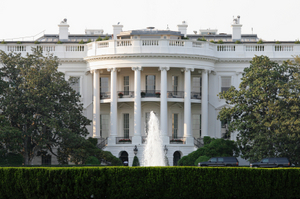
Both critics and defenders overstate true role of cost-benefit analysis in rulemaking
In a recent critique of the Obama Administration’s Office of Information and Regulatory Affairs (OIRA), Lisa Heinzerling argues that a lack of transparency at OIRA, the federal office that reviews regulations, has allowed the office to pursue an anti-regulatory agenda, stifling regulations designed to protect public health.
Heinzerling, former Associate Administrator at the Environmental Protection Agency’s Office of Policy during President Obama’s first term, offers a portrait of environmental policy in the current administration that is strikingly at odds with perceptions in both the business community and the Republican Party.
Throughout the last presidential campaign, for example, Mitt Romney argued that he needed to be elected in order to rein in regulatory agencies that had run rampant. Many Republicans in Congress agree with Eric Cantor’s characterization of President Obama’s regulatory agenda as a “barrage” and “riptide of red tape.” Small businesses frequently pinpoint regulation as one of the central reasons they have cut back hiring under the current administration.
Surely, much of the difference between Heinzerling’s account and the Republicans’ can be chalked up to the rhetorical flourishes of advocates coming from opposite ends of the political spectrum. But the views are so far apart that it is difficult to believe that either of them is grounded in reality. Has the Obama Administration promulgated regulations willy-nilly, stifling the economic recovery? Or, has the Administration bent over backwards to accommodate business, sacrificing public health in the process?
A more believable characterization of regulatory policy under President Obama is that the administration makes regulatory decisions on a case-by-case basis, sometimes coming down on the side of business and other times against business interests, giving each side reason to be angry. And basically this is how the regulatory process should work.
The interesting question, though, is: What factors determine which way each particular decision goes? Is it the substance of the policy – the merits – that drives the decision? Or is it the political environment that determines the policy decision?
Interestingly, disparate views seem to argue that substance is dispositive. In interviews promoting his new book, Simpler: The Future of Government, Cass Sunstein, the OIRA Administrator during President Obama’s first term, has suggested that he urged his staff to ignore political calculations and to make their recommendations based on the substance of the rule. As Sunstein explained, “[o]n the rare occasions when members of my staff pointed out the views of interest groups, my response was, ‘That’s sewer talk. Get your mind out of the gutter.’”
Similarly, Heinzerling, one of Sunstein’s biggest critics, suggests that substance may be to blame for holding up rules she favors. In a recent interview she noted, “There were a lot of rules that did go through, a lot of air pollution rules in particular. Air pollution rules fare particularly well in the process because they often reduce particulate matter, and particulate matter kills people, so that produces big numbers.” She went on to argue nevertheless that OIRA is informed by an anti-regulatory ideology, just one that is driven by the results of cost-benefit analysis.
I have another perspective. I worked as a staff member in OIRA for five years during the administrations of both President George W. Bush and Bill Clinton. I have also extensively studied the regulatory process. Previously I have written that when analytical results and political priorities conflict at OIRA, the political preferences ultimately triumph. While I would love to believe Sunstein that the Obama Administration is somehow different than its predecessors in this regard, and that it places analysis above politics, I am deeply skeptical.
We will find out what truly drives the Obama Administration’s regulatory priorities over the next three years. Second-term presidents have a different political calculation than first-termers. During a first term, a President can be expected to hold off on issuing regulations that may cost votes in a re-election campaign; however, in a second term, the President is much freer to pursue his own policy preferences.
This distinction underlies the perpetual controversy over so-called midnight regulations – or rules issued at the end of a presidency. If the Obama Administration is truly as driven by policy as Sunstein asserts, or as motivated by cost-benefit analysis and antipathy toward regulation as Heinzerling fears, then we should see no surge in regulation as the Obama Administration winds down. The regulations currently being held by OIRA will never see the light of day. Yet I am not sure there is anyone who seriously expects that to happen.




